Hoka Tecton X 3 review: lightweight speed meets serious off-road control
Engineered for speed and trail mastery, the Tecton X 3 is a real beast

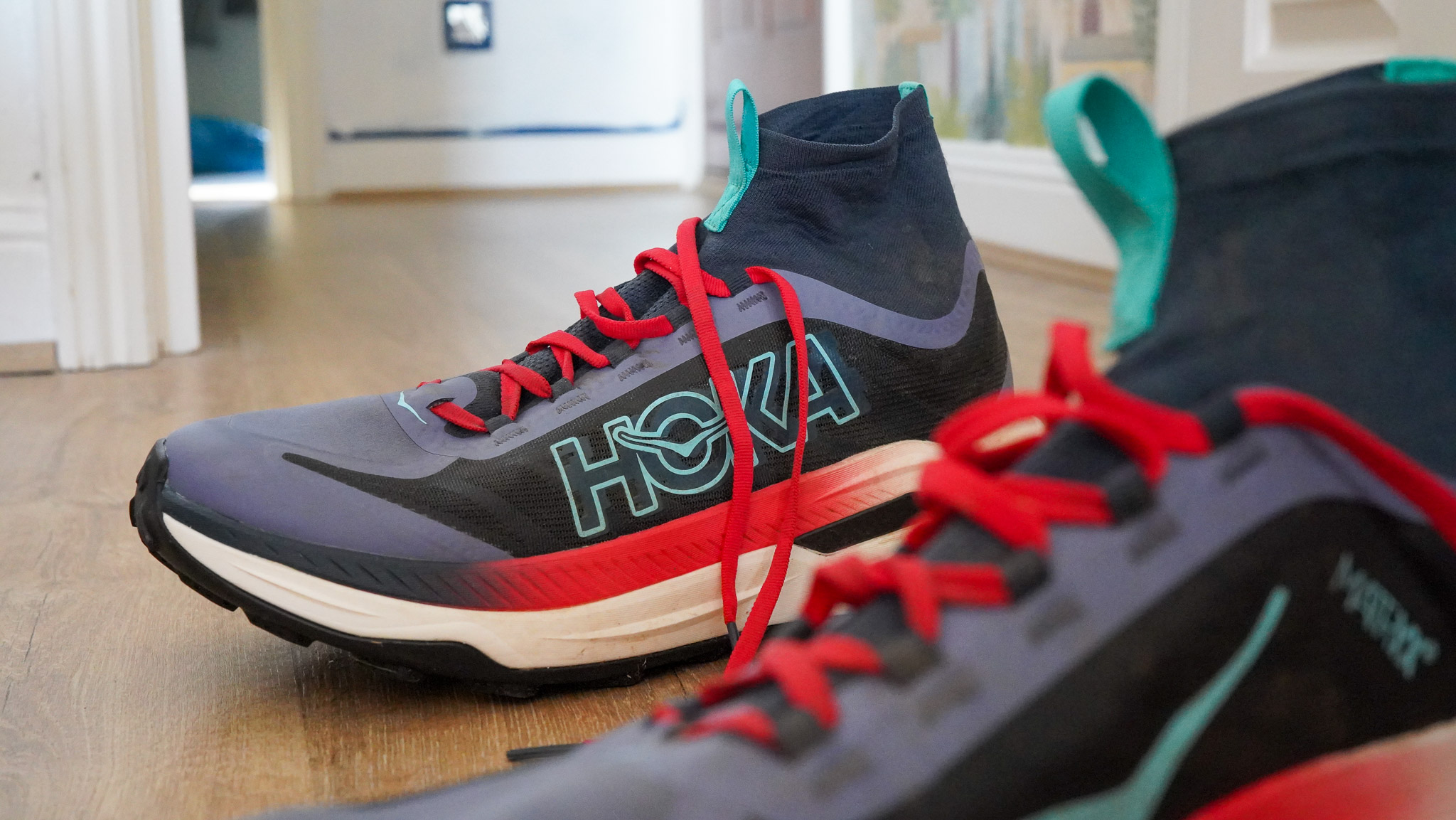

The Hoka Tecton X 3 is an absolute gem for those who crave speed and agility on the trails. It’s light, responsive, and packed with clever tech. Sure, it’s pricey, and sizing can be a bit tricky, but once dialled in, these shoes will have you flying – trust me!
-
+
Lightweight and fast
-
+
Excellent traction
-
+
Carbon plates for propulsion
-
+
Gaiter keeps debris out
-
+
Responsive and agile
-
-
Be careful with sizing
-
-
Best kept as a race-day-only shoe
Why you can trust T3

Trail shoes come in many shapes and sizes. Some offer more protection from the ground, while others focus on providing ankle support. Some are optimised for downhill running; others are more generalist.
Hoka’s latest trail running shoe wonder is a lightweight racer that joins the ranks of iconic silhouettes such as the Hoka Speedgoat 6, one of the best running shoes in the world. Of course, the two shoes are different despite feeling distinctively Hoka-esque through and through.
I had the pleasure of running the New Forest Half Marathon in very wet conditions in the Hoka Tecton X 3, a relatively flat multi-terrain course with compacted gravel, bark, and beaten paths mixed with some tarmac sections.
In essence, it is the perfect event to test the limits of the Tecton X 3 (and my legs)! How did the shoes fare, and would I recommend them for similar races? What are the strengths and weaknesses of the Tecton X 3? Let’s find out.
Hoka Tecton X 3 review
Price and availability
The Hoka Tecton X 3 was launched in August 2024 and is available to buy now directly from Hoka UK and Hoka US for a recommended price of £220/ $275/ AU$380. It comes in women’s and men’s versions in two colourways. Women’s sizes range from UK 3.5 to 9.5 (5-11 US), while the men’s are available in sizes 6.5-13.5 (7-13, 14 US).
Specifications
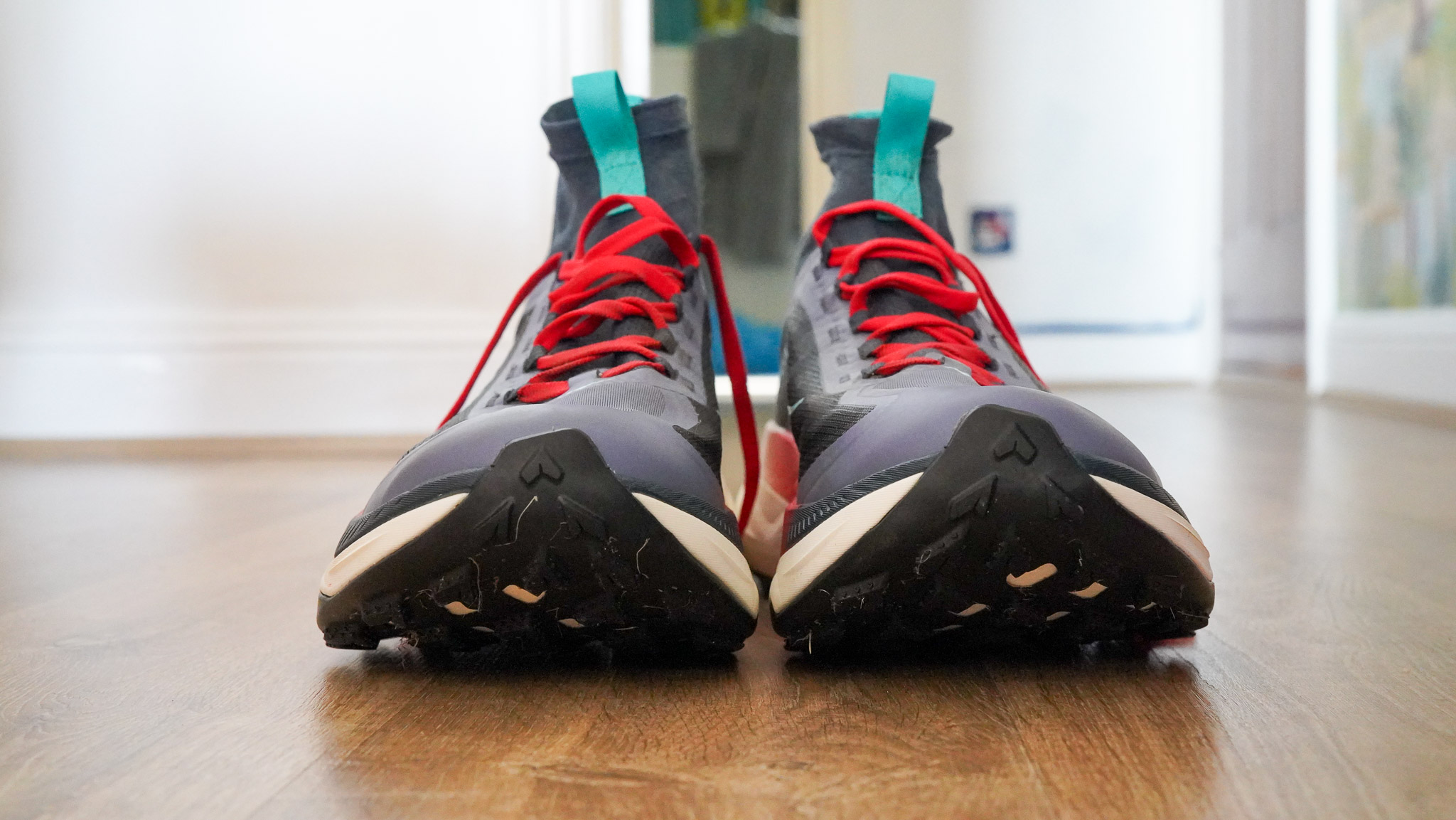
- Built for: racing, technical trails, multi-terrain events
- Tested weight: 313g/ 11.05 (men’s UK 11/ US 11.5)
- Drop: 5mm
- Stack height: 39mm / 34mm (W8), 40mm / 35mm (M10)
- Lug depth: 4mm
Design and materials
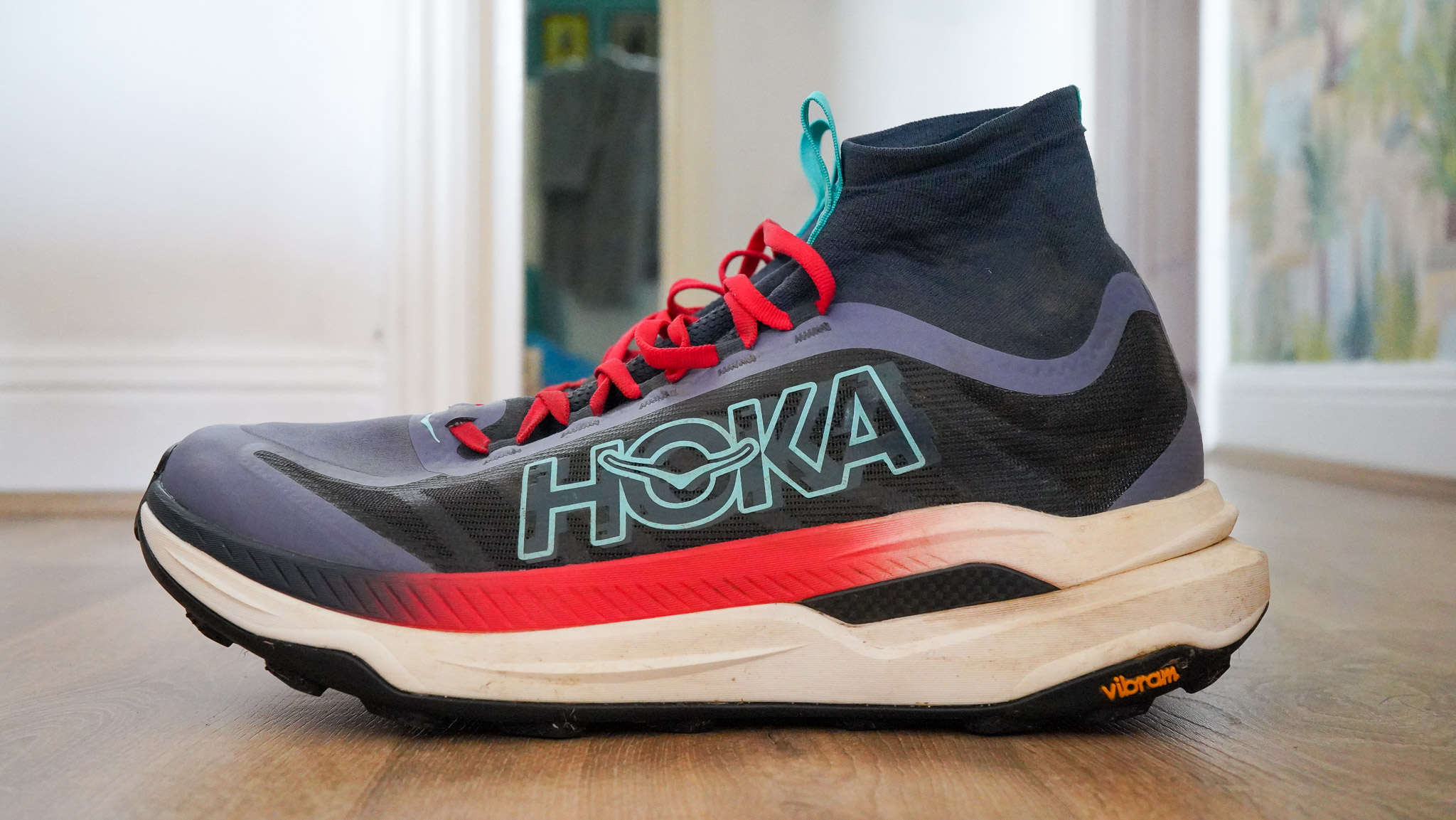
The Tecton X 3 looks and feels different from the X 2. One of the most visible upgrades is the new gaiter-style collar to help keep debris out of the shoes. The fully integrated gaiter is the extension of the tongue and hugs the ankles tightly. It’s not waterproof, and is made from a sock-like material.
The rest of the upper is made with Matryx Quick-Dry material, which, as you’d expect, dries quicker than fabric uppers. Hoka opted not to use a waterproof upper, as we know that’s not a good fit for trail running (it traps the water in the shoes).
Get all the latest news, reviews, deals and buying guides on gorgeous tech, home and active products from the T3 experts
Another exciting technology is the Dynamic Vamp, which allows for foot splay as it gets hot. The vamp is the part of the shoe that covers the top of the foot behind the toe box, and this design allows for greater flexibility to accommodate natural foot movement, particularly during running.
Dynamic Vamp is said to help allow the foot to splay (spread out) more naturally with each step, providing comfort and potentially improving stability and efficiency over long distances or rugged terrain.

The lug shape and positioning have been updated, helping the Tecton X 3 offer better traction on uneven surfaces. The lugs can be found on the reliable Vibram Megagrip Litebase outsole, a thinner, lighter compound ideal for fast-paced activities, especially racing.
The PEBA midsole compound is also new, and so is the carbon plate design and positioning. The dual-density PEBA midsole has a much taller stack height (approx. 40mm under the heels) than the Tecton X 2. Sandwiched between the different foam layers is the Parallel Carbon Fibre plate with winglets, optimised for speed and flexibility.
Of course, the Tecton X 3 has a pronounced rocker shape, as expected from a Hoka; however, the shoes feel more agile than Speedgoat 6 and other max-cushion Hokas, not to mention the monster that is the Hoka TenNine.
Performance and comfort

Running in the Hoka Tecton X 3 is a highly enjoyable experience. But before I get to tell you all about the New Forest Half Marathon [external link], let me just quickly mention sizing. For years, I wore size 10/10.5 Hoka shoes. Usually, they were fine, but lately, size 10 Hokas started to become very tight for my feet.
It first became apparent with the Hoka Clifton 9, and since then, Hoka sizing has been a bit of a hit-and-miss for me. The UK size 10.5 Hoka Cielo X1 felt perfectly fine, and so did the size 11 Hoka Skyward X.
I couldn’t even get the UK size 10 Hoka Mach 6 on my feet, which was the situation when the size 10 Tecton X 3 arrived. As a result, I thought I’d check out Hoka’s online shoe size recommendation, and it suggested the Tecton X 3 in a UK size 11.5 (my foot length is 285mm)
Now, that’s way too big, so I asked Hoka if they could send me a size 11 pair of Tecton X 3, and they were pretty much perfect. I am not sure what the takeaway from all this is, but maybe it is to be careful with sizing when you order shoes online.
Once I found the perfect size, it was time to put the shoes to the test, which I did over several off-road and mixed terrain sessions, with the crown piece being the New Forest Half (which was the perfect race to see how my legs felt before the Loch Ness Marathon).
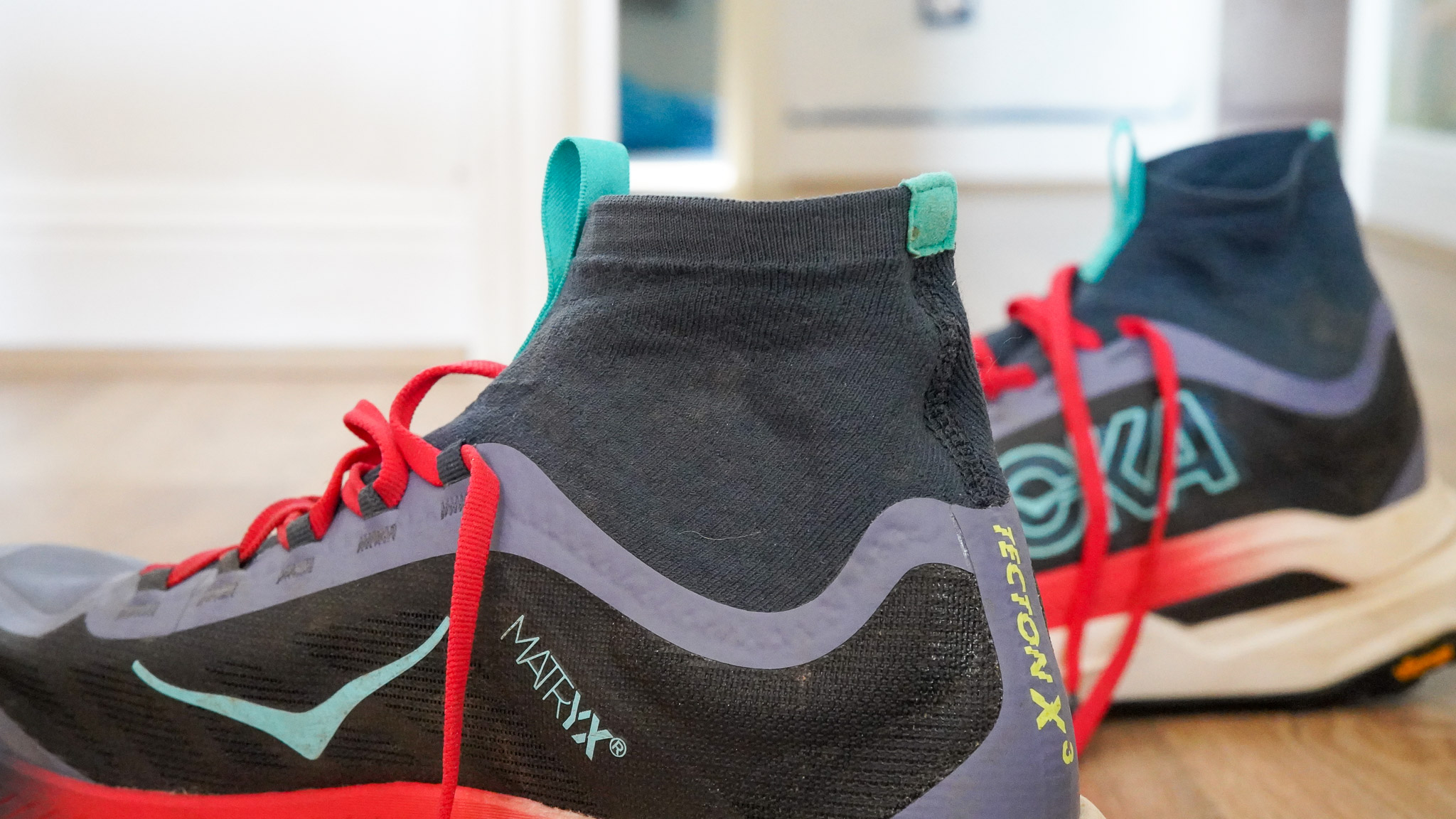
Getting in the shoes isn’t as cumbersome as one might think, looking at that gaiter, and the same goes for taking them off. The traditional lace cage offers the right amount of lockdown, aided by the dynamic vamp and the supportive toe box.
I have wide feet, and Hoka’s often feel narrow, but the Tecton X 3 didn’t feel restrictive. Instead, I appreciated the extra support around the midsection of the foot, especially when hobbling around puddles on gravel paths.
The New Forest race was rather wet, which isn’t my favourite race condition, but it provided ideal conditions to test the water retention of the Matryx upper. The material held on to little water despite me going through several puddles during the 13.1m race. Plus, the gaiter kept all the debris out of the shoes – another brownie point for the Tecton X 3!
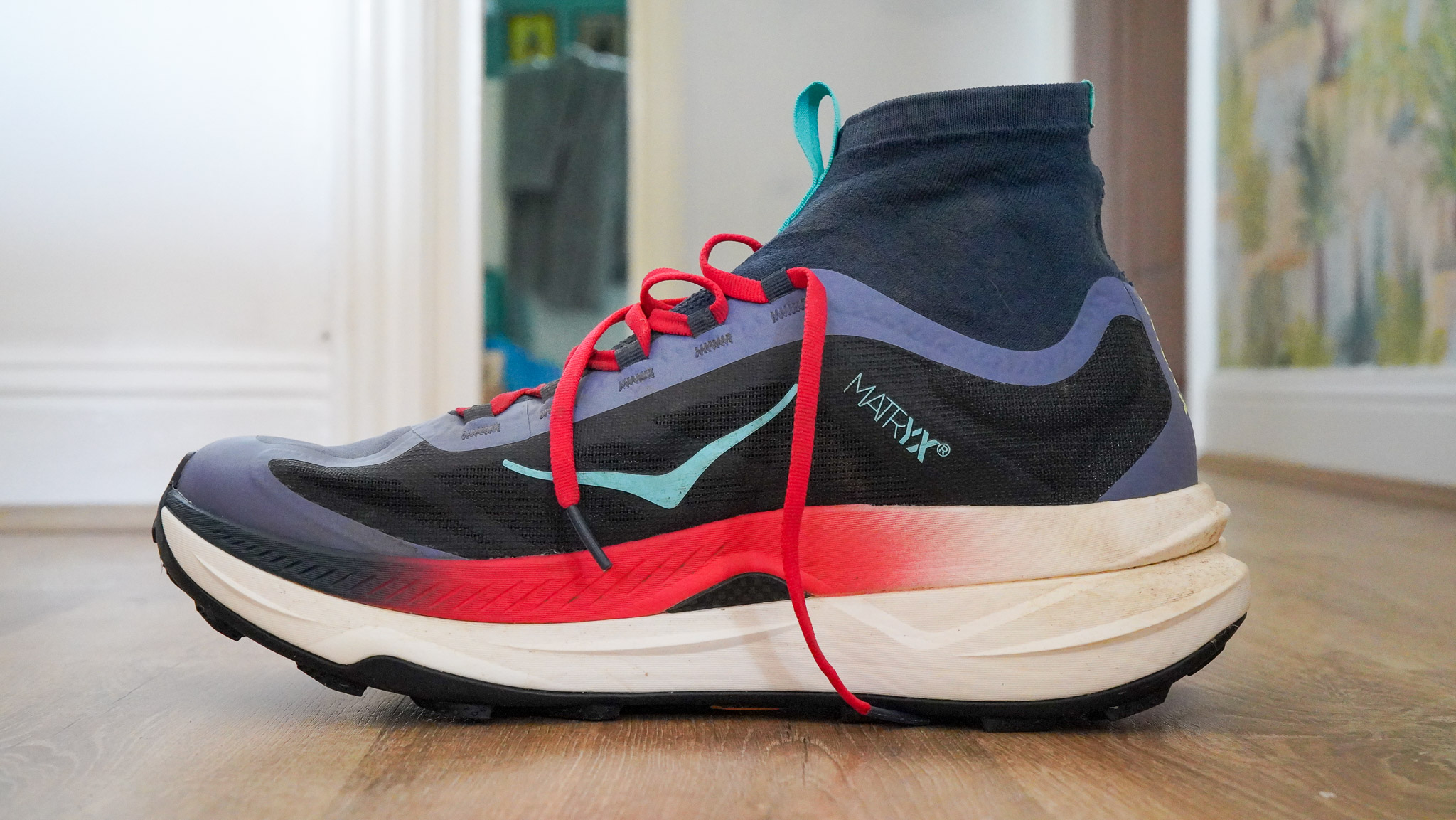
My favourite aspect of the shoes was definitely the combination of the improved traction and enhanced carbon plate. Not for a second did I feel out of control, and as a result, I wanted little energy during the race.
In fact, I have so much energy left that I had a sprint finish, which is not something I’ve ever done before. Sure, my sprint was probably more of a jogging speed for someone who can run fast, but still, the shoes allowed me to run faster when I reached the end of my limits.
Who’s the Hoka Tecton X 3 for?
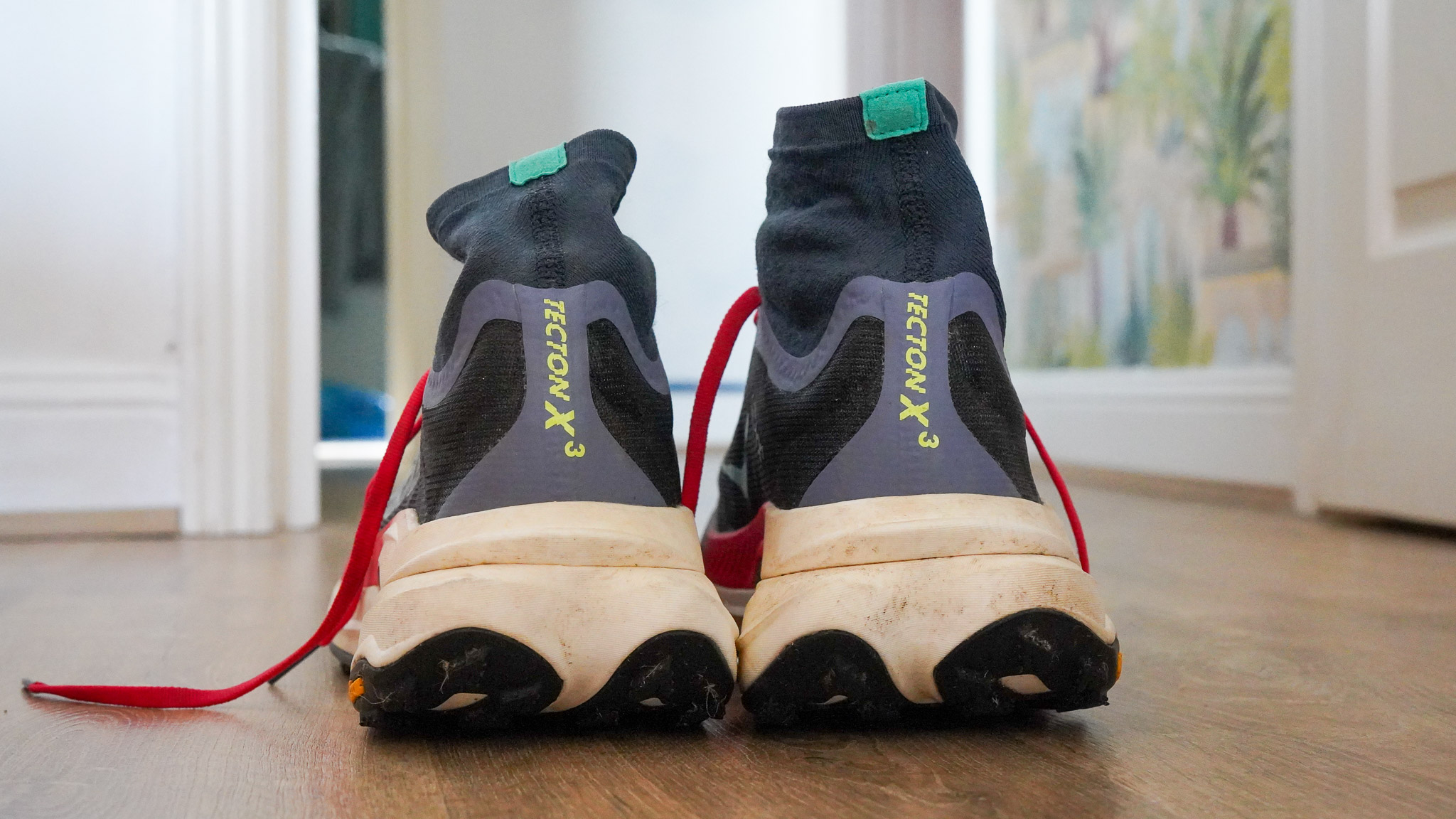
The Hoka Tecton X 3 is an off-road racing shoe for those who like to go fast. It can be used for training, but the Tecton X 3 is best kept as a race-day shoe. For that reason, it might not have the mass appeal of the Speedgoat 6 or other, more accessibly priced cushioned daily trainers.
Should you buy the Hoka Tecton X 3?
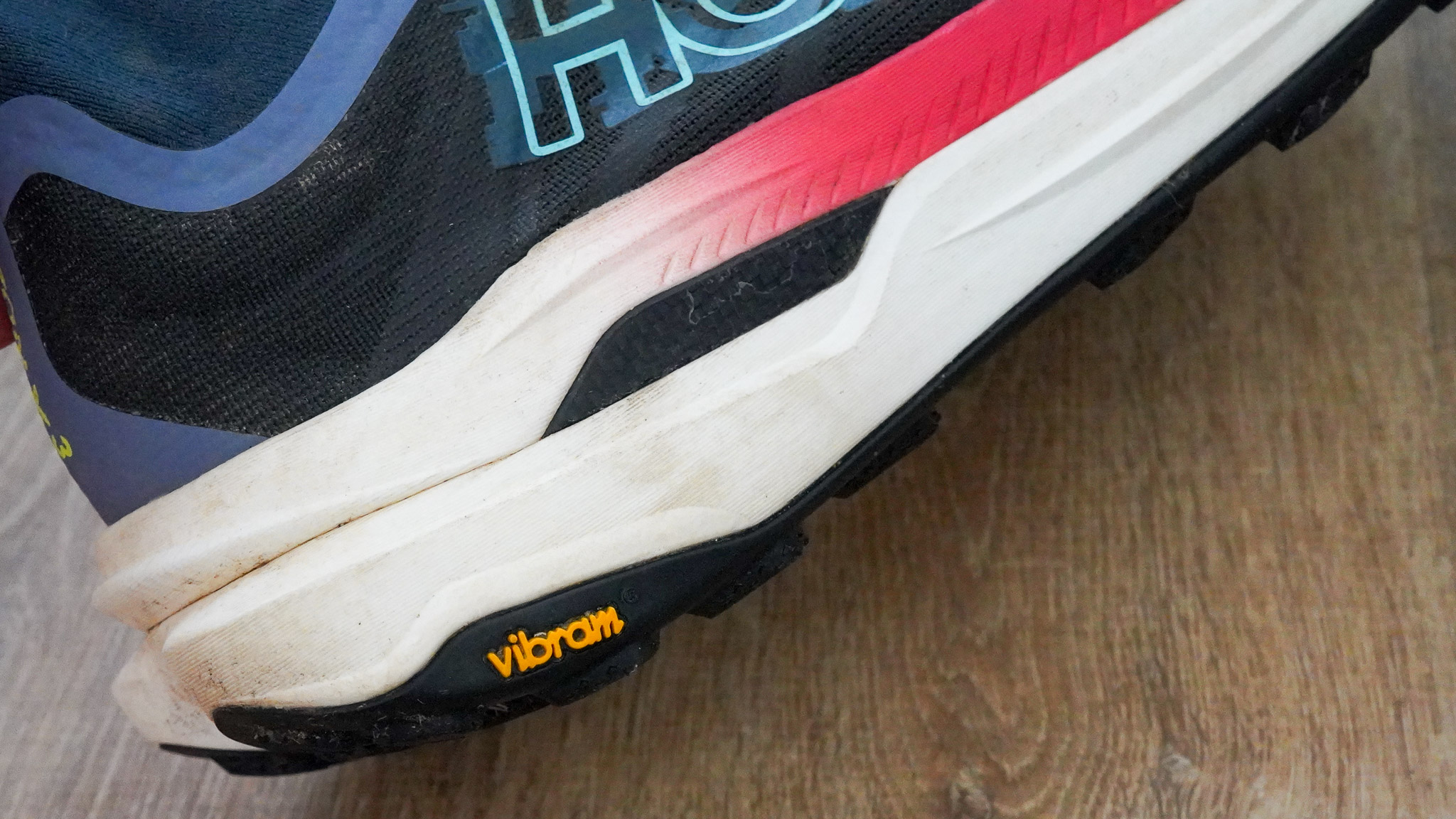
The Tecton X 3 is worth the price as it’s a brilliant off-road race-day shoe. That said, it’s not cheap and not as versatile as some other trainers, such as the Saucony Peregrine 14 or similar shoes. If you can afford to include the Tecton X 3 in your rotation as a tempo/race-day option, you should certainly consider it.
Verdict

What can I say? I went from not knowing an awful lot about Hoka’s Tecton franchise to absolutely adoring the Tecton X 3, which says a lot about the shoes' qualities. They are fast and agile and offer the right amount of protection and control to help you progress quickly when you need to.
The Hoka Tecton X 3 sits in the premium footwear category with that price tag, but the cost is justified; not many shoes will propel you forward as safely and efficiently as these. Make sure you are careful with the sizing, but other than that, there is very little, if anything, to criticise here.
Also consider
Saucony Peregrine 14: A more affordable, versatile option with excellent traction and durability, suitable for various terrains.
Salomon S/Lab Ultra 3: Great for long-distance trails with superior cushioning and stability, plus a sleek, lightweight design.
Adidas Terrex Agravic Speed Ultra: Lightweight and built for fast downhill descends, with excellent grip and a balance of cushioning and responsiveness for tackling technical trails.
Nike Terra Kiger 9: Lightweight, agile, and responsive, perfect for fast-paced, technical trails with good grip and a lower profile.
Brooks Catamount: A solid all-rounder offering speed and comfort, with great traction and cushioning for long trail runs.
Altra Lone Peak 7: Known for its zero-drop design and wide toe box, offering a natural foot movement feel, ideal for longer trail runs.

Matt Kollat is a journalist and content creator who works for T3.com and its magazine counterpart as an Active Editor. His areas of expertise include wearables, drones, fitness equipment, nutrition and outdoor gear. He joined T3 in 2019. His byline appears in several publications, including Techradar and Fit&Well, and more. Matt also collaborated with other content creators (e.g. Garage Gym Reviews) and judged many awards, such as the European Specialist Sports Nutrition Alliance's ESSNawards. When he isn't working out, running or cycling, you'll find him roaming the countryside and trying out new podcasting and content creation equipment.